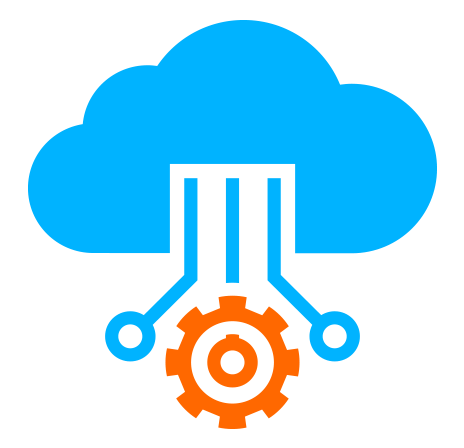 Server
Colocation
Server
Colocation
 CDN
Network
CDN
Network
 Linux Cloud
Hosting
Linux Cloud
Hosting
 VMware Public
Cloud
VMware Public
Cloud
 Multi-Cloud
Hosting
Multi-Cloud
Hosting
 Cloud
Server Hosting
Cloud
Server Hosting
 Kubernetes
Kubernetes
 API Gateway
API Gateway

Did you know nearly 80% of enterprise data today is stored in the cloud, according to industry analysts? As organizations accumulate more multimedia content, backups, logs, and unstructured datasets, managing that data cost-effectively becomes essential.
Enter Google Cloud Storage—one of the leading object storage platforms, offering flexible, scalable, and highly available storage across multiple tiers: Standard, Nearline, Coldline, and Archive. It supports everything from live streaming assets to regulatory backups. And with usage-based pricing, customers can tweak performance and cost depending on their data’s access patterns.
But choosing the right tier and understanding google cloud storage pricing isn’t always straightforward. That’s especially true when compared to other platforms like Cyfuture Cloud, which offers local alternatives for enterprises focusing on regional compliance or latency-sensitive applications.
In this comprehensive guide, we break down Google Cloud Storage’s pricing model across object, file, and archive tiers—explaining where costs come from, how to optimize spend, and how it compares with other regional hosting options.
Description: Frequent-access object store, ideal for websites, media streaming, and live data.
Pricing Elements:
Storage: ~$0.020 per GB per month
Egress: ~ $0.12 per GB (depending on region)
API Requests: micro-fees per 10,000 requests
Use Cases: Hosting images, public APIs, user-generated content
Description: Lower cost for data accessed less than once per month.
Storage cost: ~$0.010 per GB per month
Access cost: ~$0.01 per 10,000 reads
Use Cases: Monthly backups, infrequently accessed datasets
Description: Cheaper storage for data accessed less than once per quarter.
Storage cost: ~$0.007 per GB per month
Access cost: ~$0.05 per GB per access
Use Cases: Quarterly archives, compliance data
Description: Lowest cost storage designed for long-term retention (>1 year).
Storage cost: ~$0.004 per GB per month
Retrieval cost: ~$0.10 per GB
Use Cases: Year-end backups, raw audit logs, rarely accessed archives
Understanding billing requires more than knowing the storage tier:
Storage Usage
Measured per GB per month based on average data size
Network Egress
Charged when moving data to other regions or outbound to the internet
Within the same region to Google Cloud server instances is often free or minimal
API Operations
Charges for PUT, GET, LIST operations—tiny but add up at scale
Minimum Storage Duration
Nearline (30 days), Coldline (90 days), Archive (365 days)
Early Deletion Fees
Charged if data is deleted before tier’s minimum duration
Let’s run through a few realistic scenarios to see how pricing shapes up:
1 TB in Standard tier
2 TB data egress per month
1 million GET requests
Estimated Monthly Costs:
Storage: 1,000 GB × $0.020 = $20
Egress: 2,000 GB × $0.12 = $240
API: 1M ÷ 10,000 × $0.005 = $0.50
Total: ~$260.50
Great for developers serving website assets or public APIs.
10 TB in Nearline
5 TB retrieval monthly
100K GET ops
Cost Estimate:
Storage: 10,000 × $0.01 = $100
Access: 5,000 GB × $0.01 = $50
API: 100K ÷ 10,000 × $0.01 = $0.10
Total: ~$150.10
A cost-efficient archive for monthly backup workflows.
100 TB in Archive tier (retained 12+ months)
10 TB retrieval per year
1 million GET requests
Cost Estimate:
Storage: 100,000 × $0.004 = $400
Retrieval: 10,000 × $0.10 = $1,000 (spread across retrieval events)
API: 1M ÷ 10K × $0.05 = $5
Total: $1,405 total spread over a year ($117/month)
Unbeatable for compliance retention of seldom-accessed logs.
Automatically shift data to cheaper tiers once age thresholds are met. This ensures fresh data stays accessible and old data becomes cost-efficient.
If your workflow runs on Google Cloud server instances, keep storage and compute in the same region to avoid egress fees.
Smaller files lower tier costs and retrieval charges. Use gzipped CSVs, PNG images, or compressed archives when possible.
Excessive listing operations or metadata reads can add up. Consolidate and batch calls to reduce request volume.
For temp or dev/test data, remember minimum duration. Use lifecycle policies to avoid early deletion fees.
For India-based users or those needing procurement flexibility, Cyfuture Cloud offers strong local hosting and storage alternatives:
Object storage at ₹1.6/GB/month ($0.02) with free regional transfer
Cold archival tiers starting ₹0.3/GB/month ($0.004)
Unlimited storage with transparent pricing, no surprise egress charges
Seamless integration with Cyfuture servers, making hybrid hosting easy
Indian data center footprint addresses data residency and latency needs
Compared to Google Cloud’s global pricing, Cyfuture offers simpler billing for enterprises with local or hybrid requirements. It can complement or even replace Google storage in certain workflows.
Access frequency: Archive tier is cheapest—but expensive per retrieval.
Retention plans: Coldline or Archive require 1–3 months commitment.
Data criticality: For disaster recovery, tiered strategy works better than straight Archive.
Multi-cloud strategy: Distribute data across providers for redundancy and cost advantage.
Managing storage isn’t just about capacity—it’s about optimizing for performance, access, compliance, and cost. Google Cloud Storage provides a flexible and feature-rich tier model that can suit nearly any data pattern—from active API content to deep archival.
By understanding google cloud storage pricing, deploying lifecycle policies, and controlling data flow, you can drastically reduce TCO. And for businesses prioritizing regional hosting, lower egress, or easy hybrid setups, Cyfuture Cloud offers compelling local alternatives that integrate perfectly with existing cloud workflows.
Bottom line: match your data's age and access needs to the right tier, optimize your usage, and you’re on your way to cost-efficient, scalable storage—without compromising on performance or compliance.

Let’s talk about the future, and make it happen!
By continuing to use and navigate this website, you are agreeing to the use of cookies.
Find out more


